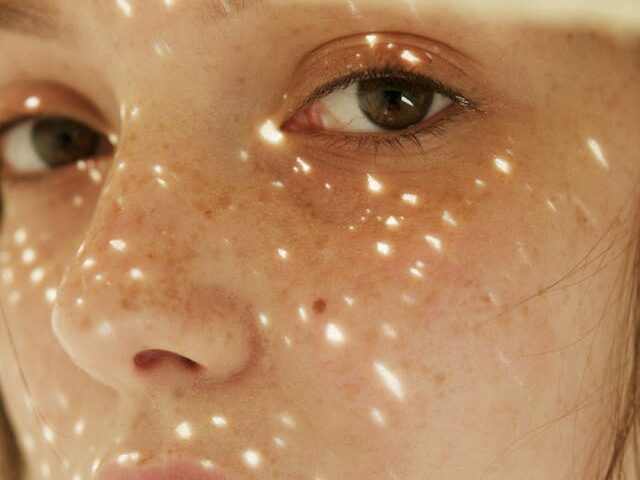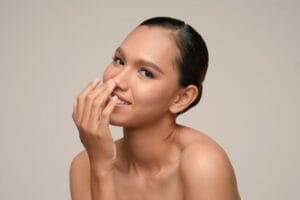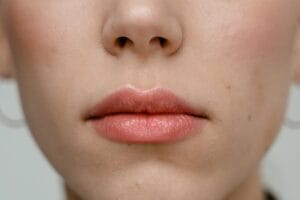Rhinoplasty Procedure: Complete Guide to Nose Surgery
Maria had been thinking about it for years. Every morning, she’d catch her reflection and notice how her nose dominated her face—not in a way that felt like her. She’d researched online, talked to friends, even consulted with three different surgeons. But the rhinoplasty procedure still felt like a mystery wrapped in medical jargon and uncertainty.
If you’re considering nose surgery, you’re probably swimming in questions. What exactly happens during a rhinoplasty procedure? How long is recovery? Will it look natural? These aren’t just cosmetic concerns—they’re deeply personal decisions that affect how you see yourself and how others perceive you.
What Is a Rhinoplasty Procedure?
A rhinoplasty procedure, commonly called a “nose job,” reshapes the nose’s bone and cartilage to improve its appearance, function, or both. But here’s what many people don’t realize: it’s not just about aesthetics. It can correct breathing issues, repair injuries, or address congenital defects that impact daily life.
Surgeons perform rhinoplasty procedures using either an open or closed technique. In an open rhinoplasty procedure, the surgeon makes a small incision across the columella—that strip of tissue between your nostrils—giving them full visibility of the nasal structure. Closed rhinoplasty procedures work entirely through incisions inside the nostrils, leaving no external scars. Each approach has its place, and the choice depends on your specific anatomy and goals.
Featured Snippet Answer: A rhinoplasty procedure is a surgical technique that reshapes the nose by modifying bone and cartilage. It can improve appearance, correct breathing problems, or repair injuries. The surgery typically takes 1-3 hours under general anesthesia, with recovery lasting 1-2 weeks for initial healing and several months for final results to emerge.
Types of Rhinoplasty Procedures
Not all rhinoplasty procedures are the same. Cosmetic rhinoplasty focuses purely on appearance—maybe you want a smaller tip, a straighter bridge, or narrower nostrils. Functional rhinoplasty addresses breathing problems, often involving the septum (that wall dividing your nasal passages). Many patients need both, which is why the best rhinoplasty procedure plans address form and function together.
Revision rhinoplasty procedures are another category entirely. These are second (or third) surgeries to correct issues from a previous rhinoplasty procedure. They’re more complex because scar tissue and altered anatomy make the surgical landscape trickier. That’s why choosing an experienced surgeon matters—especially if you’re considering a revision rhinoplasty.
What to Expect During Your Rhinoplasty Procedure
The day of your rhinoplasty procedure starts early. You’ll arrive at the surgical facility—often a hospital or accredited outpatient center—where the team will prep you for surgery. Most rhinoplasty procedures use general anesthesia, meaning you’ll be completely asleep. Some surgeons offer local anesthesia with sedation for minor adjustments, but that’s less common.
Once you’re under, the rhinoplasty procedure begins. The surgeon makes their incisions (open or closed, as discussed), then carefully reshapes your nasal framework. They might remove excess bone or cartilage, add grafts to build up areas, or reposition structures entirely. This part of the rhinoplasty requires precision—millimeters matter when it comes to nasal symmetry and proportion.
The rhinoplasty procedure typically takes one to three hours, depending on complexity. Afterward, you’ll wake up with a splint on your nose and possibly packing inside your nostrils. Don’t expect to see results immediately—swelling makes most patients look worse before they look better. That’s completely normal after a rhinoplasty procedure.
Immediate Post-Operative Care
Right after your rhinoplasty procedure, you’ll need someone to drive you home. The anesthesia effects linger, and you won’t be in any condition to operate a vehicle. Plan to rest with your head elevated—this reduces swelling and promotes healing. Your surgeon will give you specific instructions about medications, ice application, and activity restrictions.
Pain levels vary after a rhinoplasty procedure. Some patients describe it as pressure and congestion more than sharp pain. Others need prescription pain medication for the first few days. Most people manage discomfort with over-the-counter options after the initial 48 hours. The key is following your surgeon’s pain management plan rather than toughing it out unnecessarily.
Rhinoplasty Procedure Recovery Timeline
Understanding the rhinoplasty procedure recovery timeline helps set realistic expectations. The first week is the most challenging. Swelling peaks around days two to three, and you’ll likely have bruising around your eyes—those classic “black eyes” people associate with nose surgery. The splint usually comes off after five to seven days, which is when you’ll get your first real glimpse of the new shape.
But here’s what surprises many rhinoplasty procedure patients: the healing isn’t linear. Swelling fluctuates, especially in the morning. Your nose might look different from day to day, even week to week. This is normal. The rhinoplasty procedure creates changes that your body needs time to settle into.
By two weeks post-rhinoplasty procedure, most people can return to work and light activities. Strenuous exercise waits until your surgeon clears you—usually around four to six weeks. The external healing happens relatively quickly, but internal healing continues for months. That’s why final rhinoplasty procedure results can take up to a year to fully emerge, though most of the dramatic changes are visible within three to six months.
Long-Term Recovery Considerations
Beyond the initial recovery period, rhinoplasty procedure patients need to protect their investment. Sun protection becomes crucial—UV exposure can cause permanent discoloration on healing nasal skin. Many surgeons recommend avoiding contact sports permanently, or at least wearing protective gear. The nasal structure remains somewhat delicate even after full healing.
Some patients experience temporary numbness or altered sensation around the nose after a rhinoplasty procedure. This usually resolves within months, but in rare cases, it can persist longer. Changes in breathing are also possible during healing—congestion from internal swelling is common and typically improves as tissues settle.
Risks and Complications of Rhinoplasty Procedures
Like any surgery, rhinoplasty procedures carry risks. Infection is possible, though rare with proper care. Bleeding can occur, especially in the first few days. Some patients develop hematomas—collections of blood under the skin—that might need drainage. Asymmetry is another potential issue; even skilled surgeons can’t guarantee perfect symmetry, though they aim for it.
More serious rhinoplasty complications include breathing problems if the surgery narrows the airways too much, or visible deformities if healing doesn’t progress as expected. That’s why choosing a board-certified plastic surgeon or facial plastic surgeon with extensive rhinoplasty experience matters. They understand the delicate balance between aesthetic goals and functional preservation.
Revision rates for rhinoplasty procedures hover around 5-15%, depending on the study you read. Some revisions are planned—surgeons sometimes stage complex changes across multiple procedures. Others address unexpected outcomes. The key is having realistic expectations and choosing a surgeon who’s honest about what’s achievable with your specific anatomy.
Reducing Your Risk
You can’t eliminate all risks from a rhinoplasty , but you can minimize them. Follow pre-operative instructions religiously—things like stopping certain medications, avoiding smoking, and managing health conditions. Be completely honest with your surgeon about your medical history, medications, and expectations. A good rhinoplasty procedure outcome starts with thorough preparation and clear communication.
Choosing the Right Surgeon for Your Rhinoplasty Procedure
This might be the most important decision you make. A rhinoplasty procedure is as much art as science, and not all surgeons have the same skill level or aesthetic eye. Look for board certification in plastic surgery or facial plastic surgery—these credentials indicate rigorous training and ongoing education. But don’t stop there.
Review before-and-after photos of actual rhinoplasty patients. Pay attention to noses similar to yours and results that match your goals. Ask about the surgeon’s revision rate and how they handle complications. A confident surgeon will discuss both successes and challenges openly. During consultations, you should feel heard and understood, not rushed or dismissed.
Experience matters tremendously with rhinoplasty procedures. A surgeon who performs hundreds of nose surgeries annually will likely deliver better results than someone who does a handful. Ask directly: “How many rhinoplasty procedures do you perform each year?” The answer tells you whether this is their specialty or a side practice.
Questions to Ask During Consultation
Come prepared to your rhinoplasty consultation with specific questions. Ask about the surgeon’s preferred technique (open vs. closed) and why they recommend it for your case. Discuss realistic outcomes based on your skin type, nasal structure, and goals. Understand the total cost—rhinoplasty surgeries aren’t cheap, and you want no surprises.
Inquire about the surgical facility’s accreditation and anesthesia provider credentials. Ask what happens if you’re not satisfied with results—what’s the revision policy? A transparent surgeon will discuss all of this without defensiveness. Remember, you’re interviewing them as much as they’re evaluating you as a candidate.
Cost Considerations for Rhinoplasty Procedures
Rhinoplasty procedure costs vary widely by location, surgeon experience, and complexity. In the United States, you might pay anywhere from $5,000 to $15,000 or more for a cosmetic rhinoplasty procedure. Functional rhinoplasty surgeries addressing breathing issues might be partially covered by insurance, but purely cosmetic work typically isn’t.
The rhinoplasty procedure price usually includes surgeon fees, facility costs, and anesthesia. But ask what’s included—some quotes are misleadingly low, then add fees later. Revision rhinoplasty surgeries often cost more than primary surgeries because they’re more complex. Don’t choose a surgeon based solely on price; a botched rhinoplasty procedure costs far more to fix than doing it right the first time.
Many practices offer financing options for rhinoplasty procedures. This can make the surgery more accessible, but read terms carefully. Interest rates vary, and you don’t want to be paying off a rhinoplasty surgery for years at high rates. Some patients save up specifically for their rhinoplasty procedure, which eliminates financing stress entirely.
Realistic Expectations for Rhinoplasty Procedure Results
Here’s where many rhinoplasty procedure patients struggle: managing expectations. Social media and celebrity transformations create unrealistic standards. Your rhinoplasty procedure won’t make you look like someone else—it should make you look like the best version of yourself. A good surgeon will tell you what’s achievable with your specific anatomy, not promise impossible transformations.
Your nose should look natural and balanced with your other facial features after a rhinoplasty procedure. It shouldn’t scream “I had surgery.” The best rhinoplasty procedures are subtle—people might notice you look better without pinpointing why. That’s the mark of skilled work.
Age and skin type affect rhinoplasty procedure outcomes. Thicker skin takes longer to show definition changes. Older patients might need additional procedures to address surrounding facial aging. Ethnic rhinoplasty procedures require particular expertise to preserve cultural features while achieving desired changes. These nuances matter when setting expectations.
When Results Don’t Match Expectations
Sometimes, rhinoplasty procedure results don’t meet expectations—either because healing took an unexpected turn or because goals weren’t realistic from the start. If you’re genuinely unhappy with your rhinoplasty procedure outcome, discuss it with your surgeon. Most want satisfied patients and will work with you on solutions, whether that’s minor revisions or addressing specific concerns.
But give it time. Rhinoplasty procedure results evolve for months, even up to a year. What looks imperfect at three months might be exactly right at twelve months. Patience is frustrating but necessary. Your surgeon should guide you through this timeline and help you understand what’s normal healing versus what might need attention.
Rhinoplasty Procedure Alternatives and Non-Surgical Options
Not everyone needs or wants a full rhinoplasty procedure. Non-surgical nose jobs using dermal fillers can address certain concerns—like smoothing a dorsal hump or lifting a drooping tip—without surgery. These “liquid rhinoplasty” procedures last 12-18 months and cost significantly less than surgical rhinoplasty procedures. But they have limitations.
Fillers can’t reduce nose size, narrow nostrils, or fix breathing problems. They work by adding volume strategically, which means they’re best for specific aesthetic tweaks rather than major reshaping. If you’re considering a non-surgical rhinoplasty procedure alternative, understand what it can and can’t achieve. Sometimes, a temporary solution helps you decide whether you want permanent changes.
For breathing issues, septoplasty (straightening the septum) might be sufficient without full rhinoplasty surgery changes. Turbinate reduction addresses nasal congestion from enlarged turbinates. These functional procedures can sometimes be combined with cosmetic rhinoplasty procedures, but they’re also effective standalone treatments when appearance isn’t the concern.
Preparing for Your Rhinoplasty Procedure
Preparation starts weeks before your rhinoplasty surgery . Your surgeon will give you specific instructions, but common pre-operative steps include stopping certain medications (like blood thinners), avoiding smoking and alcohol, and arranging for post-surgery help. You’ll need someone to drive you home and ideally stay with you the first night.
Set up your recovery space in advance. Stock up on soft foods, entertainment, and comfort items. Prepare ice packs for swelling management. Have loose, button-up shirts ready—you won’t want anything that pulls over your head. These small preparations make the rhinoplasty procedure recovery much smoother.
Mental preparation matters too. A rhinoplasty procedure is a significant decision, and it’s normal to feel nervous. But if you’ve done your research, chosen a qualified surgeon, and set realistic expectations, you’re as prepared as you can be. Trust the process and your preparation.
Pre-Operative Testing
Most rhinoplasty procedure patients need pre-operative clearance, especially if they have underlying health conditions. Blood work, EKG, or other tests might be required depending on your age and medical history. These aren’t just formalities—they ensure you’re safe for surgery. Complete all requested testing promptly so nothing delays your rhinoplasty surgery date.
Life After Your Rhinoplasty Procedure
Most rhinoplasty surgery patients are happy with their results. Studies show satisfaction rates around 85-90%, which is high for cosmetic procedures. But satisfaction isn’t just about appearance—it’s also about improved breathing, increased confidence, and feeling more like yourself.
Your rhinoplasty surgery results should last a lifetime. The structural changes are permanent, though natural aging will still affect your face over time. Some patients find that their rhinoplasty procedure gives them confidence that extends beyond their appearance—they feel more comfortable in social situations, more willing to be photographed, more at ease in their own skin.
Maintain realistic expectations about life changes. A rhinoplasty surgery can improve your appearance and confidence, but it won’t solve all life’s problems or guarantee career success or relationship happiness. It’s a tool for self-improvement, not a magic solution. The patients who are happiest with their rhinoplasty procedure results are those who had realistic goals from the start.
Final Thoughts on Rhinoplasty Procedures
A rhinoplasty procedure is a significant decision that requires careful consideration, research, and realistic expectations. Whether you’re seeking cosmetic improvements, functional corrections, or both, understanding what the rhinoplasty surgery entails—from initial consultation through long-term recovery—helps you make informed choices.
The best rhinoplasty surgery outcomes come from skilled surgeons, thorough preparation, and patience during recovery. Results take time to fully emerge, but most patients find the wait worthwhile. If you’re considering a rhinoplasty procedure, take your time researching, consult with multiple qualified surgeons, and ensure your goals align with what’s achievable for your specific anatomy.
Remember: a successful rhinoplasty procedure should enhance your natural features, not erase them. The goal is balance, proportion, and harmony—not perfection. When done well, a rhinoplasty procedure can be life-changing in the best way, giving you confidence and comfort in your own appearance that lasts for decades.














Post Comment